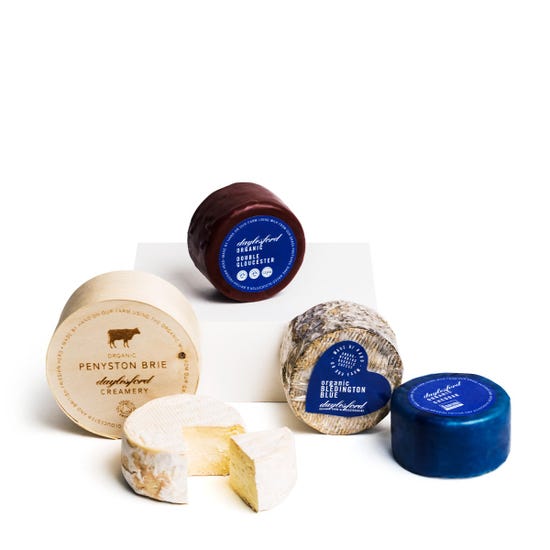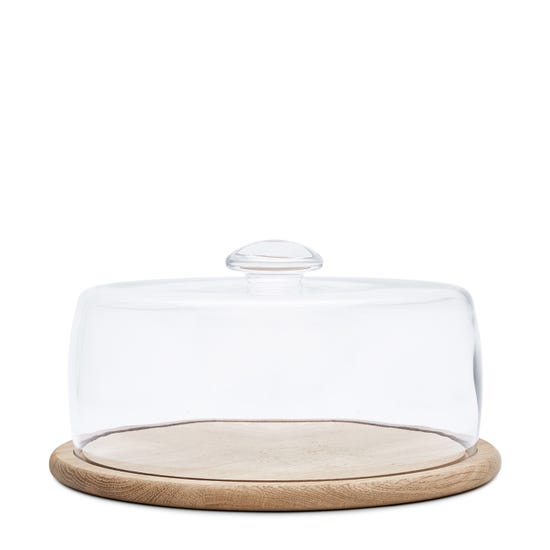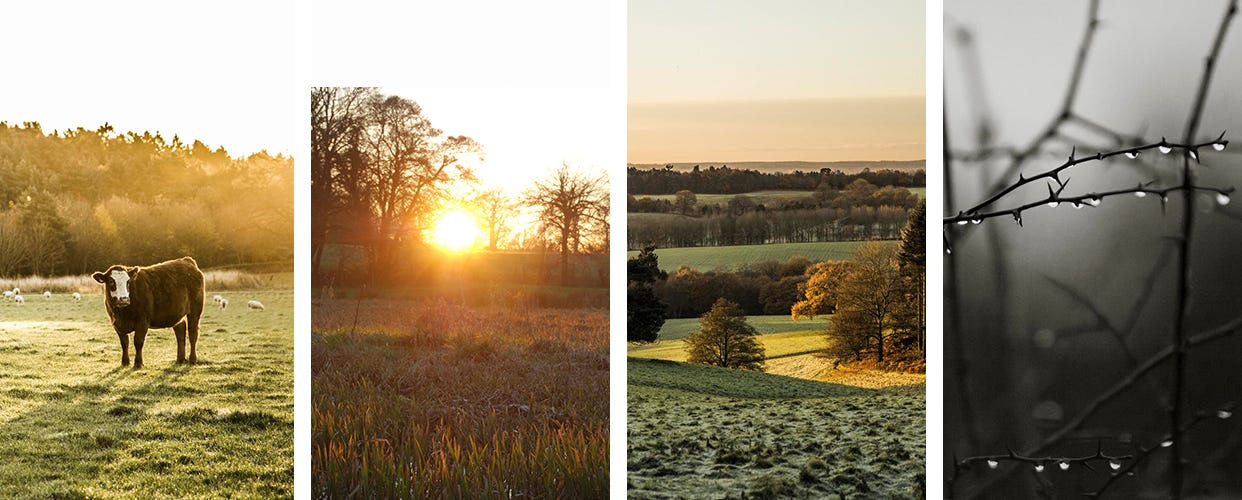
Notes from the Farm - November 2023
FROM RICHARD SMITH
Farm Managing Director
TURKEY PARADISE
At this time of year our organic turkeys enjoy scrumping for windfalls under the apple trees. They love pecking at the fallen fruit alongside bugs, worms and clover, which is why the farm team’s nickname for the agroforestry paddock where the turkeys roam is “Shangri La”; heaven on earth! There is no doubt in our mind that giving turkeys happy lives, and encouraging their natural instincts, results in the best possible eating quality. From the end of November we add homegrown oats to their forage-based diet, which gives the meat a wonderfully rich, nutty flavour and juicy texture – ideal for impressing your guests at Christmas.
RESTING AFTER RUTTING
At our Wootton Estate in Staffordshire, the rutting season has come to an end. Thestags have been busy for several weeks holding their harems of hinds (female deer) together for mating. It’s an intense period and the stags lose around a third of their body weight over rutting season. As the colder weather hits, the stags need to regain that weight to get through winter, so they will graze on the hills and valleys of theestate over the next couple of weeks to bulk up.
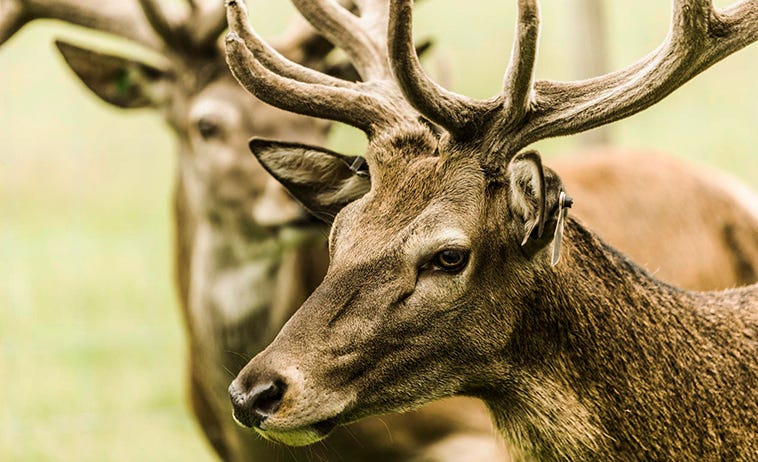

RAMS AND RADDLES
At Daylesford we are lucky enough to have a large lambing shed where we can bring in all our pregnant ewes at the same time, to give birth in the warmth and comfort of a big straw bed barn.
However, some of the land we farm has a different story. One such farm has a barn that can accommodate only some of the flock, so we must plan accordingly.
At the beginning of November, the rams went out to pasture to run with the ewes. We fit the rams with a raddle, a harness holding a “mating crayon” that leaves a coloured mark on the ewe. We start with the colour yellow, then after a week switch to red, then finally switch to blue. In theory, the colours help us organise the ewes and know which should come into the barn first. Once the first lambs are born, they and their mothers can go out onto spring grass a few days later, making space for the next set of expecting ewes. It’s not an exact science, but raddles are a useful tool to show that the rams are hard at work and a helpful indication of when to expect the newest additions to our flock next spring.
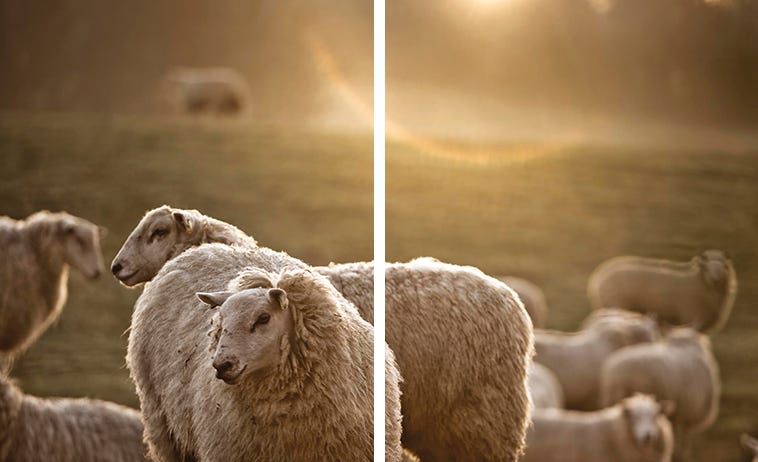

WINTER BEEHIVES
We’ve been preparing our bees for winter by reducing their hives to two boxes with plenty of their own honey stores to feed them through the winter months. Mice like to hibernate in the warm hives, and can chew through wax and honey, so we install mouse guards to discourage this nuisance. The tasks of cleaning and treating the spare boxes and replacing the foundation in the frames is part of the crucial preparation for next spring, when the bees will start collecting pollen again.
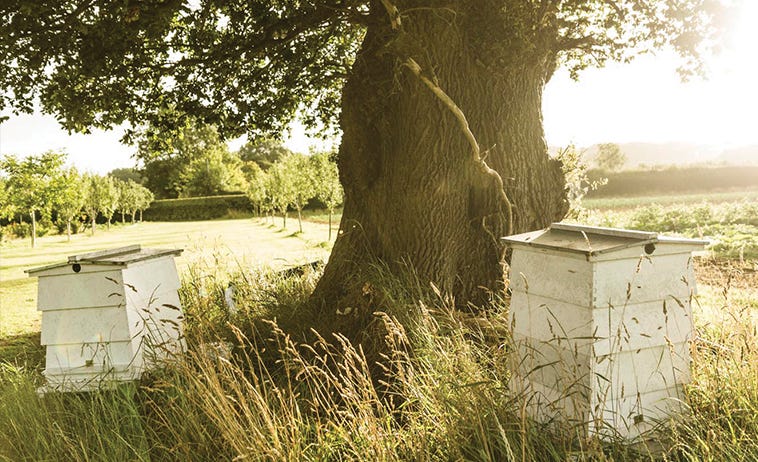

DEAR DAIRY
Believe it or not, our Creamery team is already thinking about Christmas 2024. Our dairy cows produce more milk over winter than at any other time of year, which is good news for cheese making. One of our organic British Friesians will produce 30 litres of milk per milking and it takes around 10 litres of milk to make 1kg of cheese.
The Cheddar truckles for next year need to be in the aging room by March at thelatest to give them time to mature and develop their wonderful texture and flavour, so preparations begin over a year in advance.
It wouldn’t be Christmas without a good cheeseboard, and our range of artisan and award-winning organic cheeses includes classic choices like our celebrated Cheddar and much-loved Bledington Blue, as well as seasonal twists such as our Truffled Penyston Brie. Pop into the Cheese Rooms in our farmshops for advice from our team, or browse the selection available online.
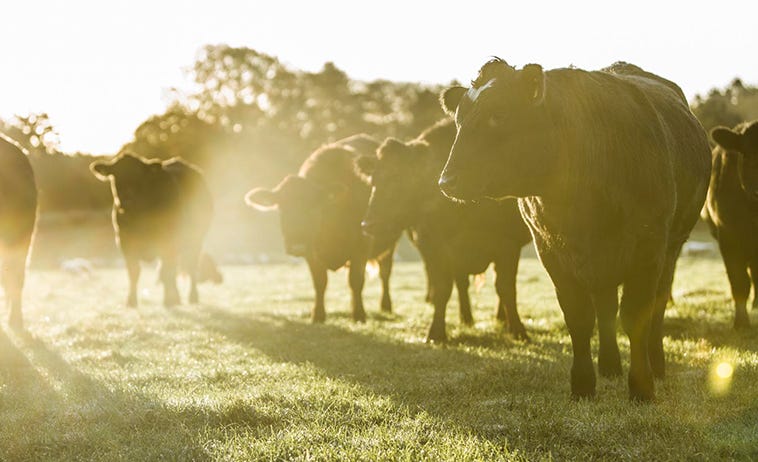

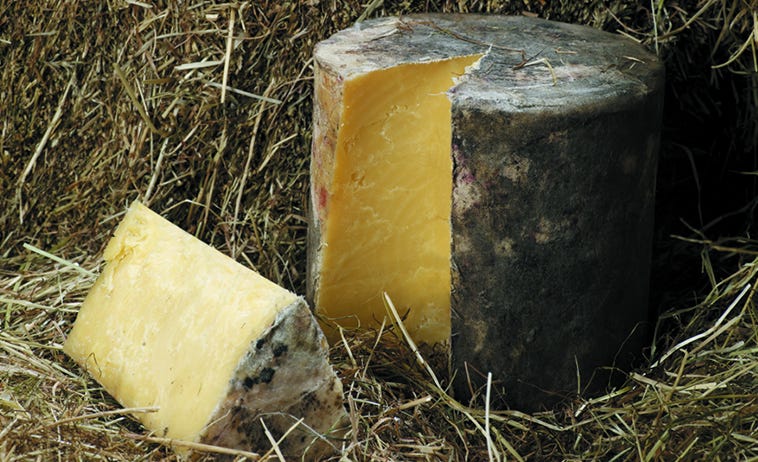

PLANTING FOR SPRING
If you’ve spent time planting bulbs for spring in your garden at home, spare a thought for our Market Garden team who planted 18,000 tulip bulbs over a back-breaking November. Our Cutting Garden was first planted in 2017, and six years in, the Head of our Market Garden Jez Taylor has carefully honed the selection down to 20 favourite varieties, including the colourful Menton, the larger Ivory Floradale, dramatic Canaval De Rio and the exquisite La Belle Epoque.
By next March, the tulips will bloom into a colourful sea of pastel pinks, pale yellows, vibrant reds, deep purples and creamy whites. We can't wait to show you.
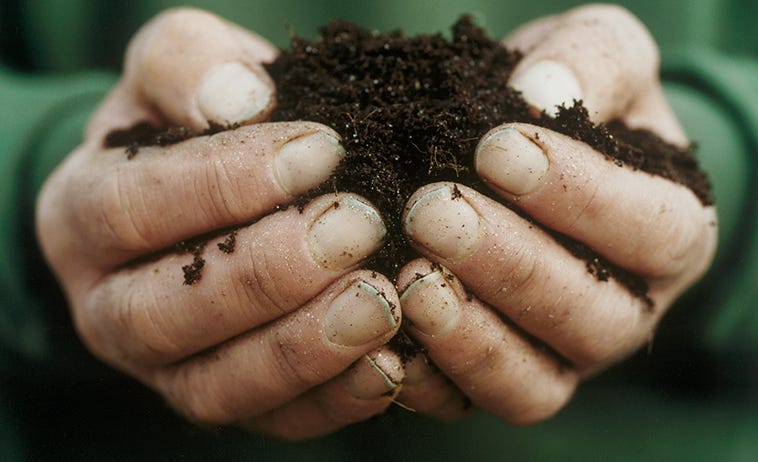

FORAGED WREATHS
Wreaths are a big part of our festive celebrations at Daylesford. You may have spotted our foraged wreaths adorning the walls, doors and ceilings in our Cotswold farmshop and London stores.
At this time of year, our wonderful floristry team hosts wreath-making masterclasses. We spoke to Lead Floristry Tutor, Lesley Young for her top tips:
1. Consider texture contrast by using a diverse mix of foliage. For example, a fluffy conifer works wonderfully well with the glossier leaves of berried ivy.
2. Make it sumptuous by creating plentiful bunches that fill out your wreath. Scots pine, juniper and box are fabulous for adding bulk.
3. Ensure you have the correct gauge wire to hold your heavy winter evergreens in place.
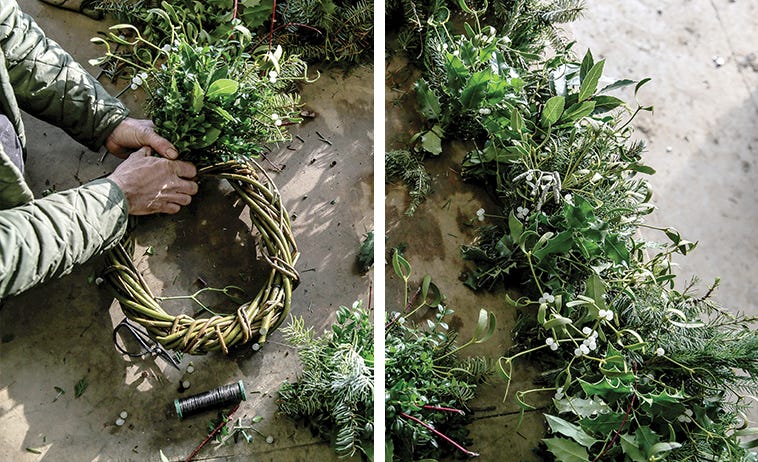

“Over the last month I’ve enjoyed easing into the festive season at the farm. Our bakery team has been busy wrapping and ribboning Christmas puddings, hundreds of mini truffled Penyston Bries are maturing in the creamery, the farmshop is brimming with decorations, hampers, food and drinks - and the fairy lights are twinkling on the big walnut tree outside. As much as I relish these preparations, it is important to try to stay grounded at this time of year. Whether it’s a quiet morning walk or a little meditation before bed, I try to find small moments to recharge my mind and body ahead of the busy month to come."




